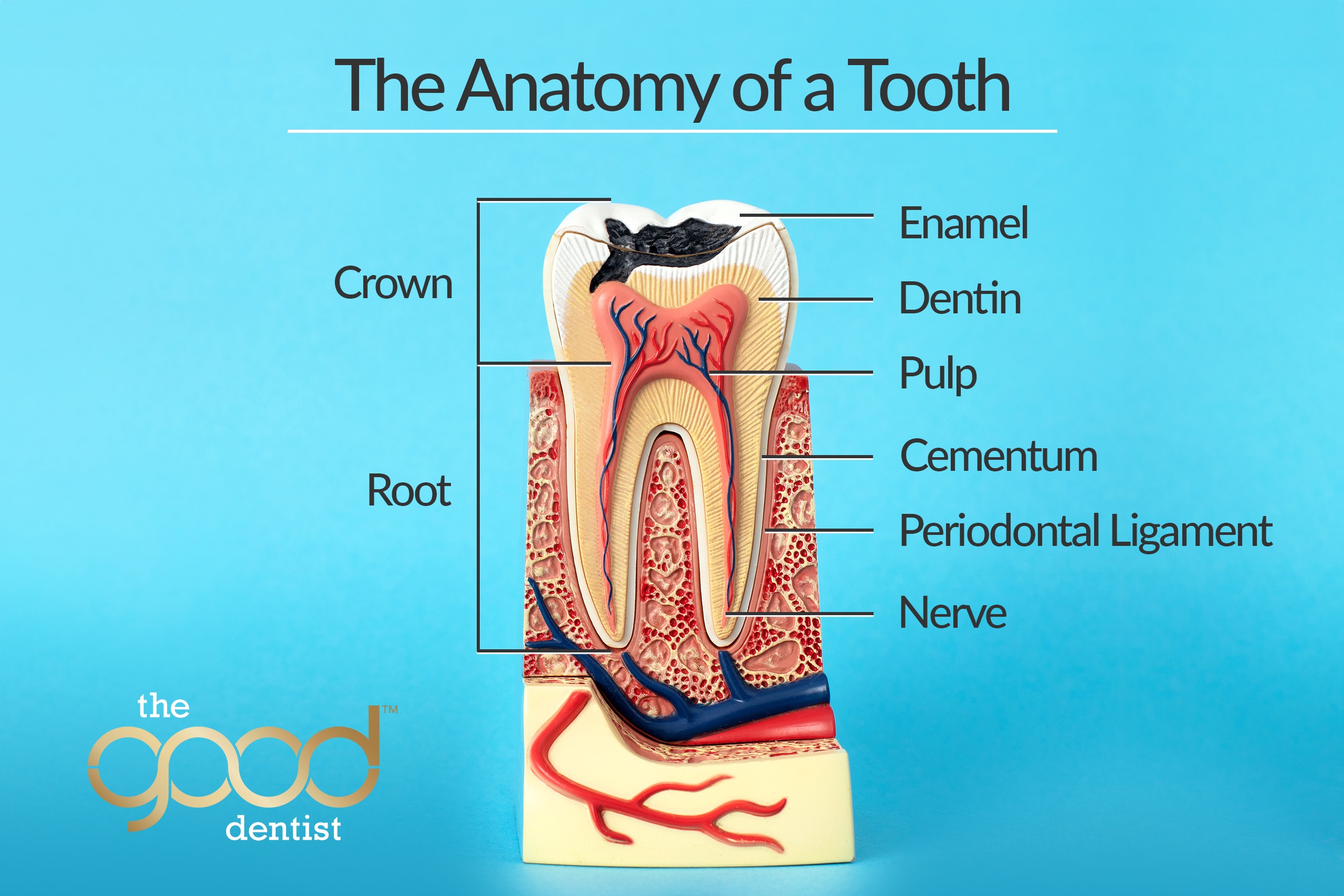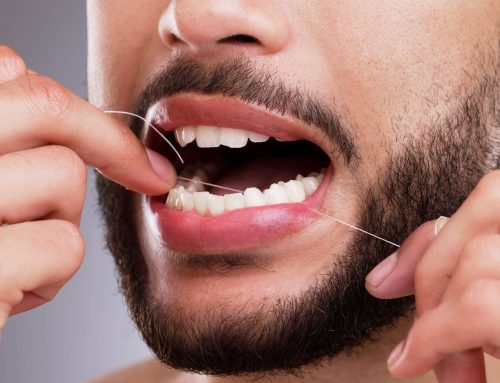Understanding Tooth Structure for Better Oral Health
Have you ever wondered what makes up the structure of a tooth? For a start, your teeth are not solid all the way through! Even though tooth enamel is the hardest substance in the human anatomy, our teeth are not pure enamel. Understanding the anatomy of a tooth is crucial for maintaining good oral health.
Human Tooth Anatomy
From the crown to the root, each part of the tooth plays a vital role in chewing, speaking, and smiling. The Good Dentist takes a closer look at the different parts of a human tooth, the tooth structure, and each individual function.
Crown
The crown is the visible part of the tooth that sits above the gum line. It is covered by a hard, white substance called enamel, the hardest substance in the human body.
Enamel
Enamel covers the crown and protects the tooth from decay and damage caused by chewing, biting, and grinding. However, enamel can wear down over time due to poor oral hygiene, acidic foods and drinks, and other factors like trauma or medications.
Root
The root is the part of the tooth that is embedded in the jawbone and supports the tooth. It is covered by a layer called cementum, which helps to anchor the tooth in place. The root is also surrounded by a protective layer called the periodontal ligament, which connects the tooth to the bone and helps to absorb shock.
Nerve
The nerve of a tooth, located in the pulp chamber at the centre of the tooth, acts as the tooth’s alarm system by detecting stimuli such as pain or temperature changes and triggers a response to protect the tooth from further damage.
Periodontal Ligament
The periodontal ligament is located between the tooth root and the surrounding bone. This thin ligament provides support and helps securely anchor the tooth in the socket while allowing for slight movement during chewing.
Dentin
Dentin is the layer of the tooth beneath the enamel and cementum. It is softer than enamel and contains tiny tubules that connect to the nerves in the pulp. Dentin is responsible for giving teeth their colour, and it can become exposed if the enamel wears down or if the gums recede. This can cause tooth sensitivity and pain.
Pulp
The pulp is the soft tissue inside the tooth that contains blood vessels, nerves, and connective tissue. It provides nourishment to the tooth and helps to keep it alive. If the pulp becomes infected or inflamed, it can cause severe pain and may require a root canal procedure to remove the infected tissue.
Cementum
Cementum is a layer of hard, bony tissue that covers the root of the tooth. It helps to anchor the tooth in place and provides a surface for the periodontal ligament to attach to.
Why Tooth Anatomy Matters
Understanding tooth anatomy is essential for maintaining good oral health. By knowing the different parts of a tooth, you can identify potential problems and take preventive measures to avoid them.
For example, if you notice that your enamel is wearing down, you can take steps to protect it, such as avoiding acidic foods and drinks, brushing gently with a soft-bristled brush, and using fluoride toothpaste.
Regular dental checkups are also crucial for maintaining good oral health. Your dentist can identify potential problems early on and recommend treatments to prevent them from getting worse.
Feel free to contact us if you have further questions about the anatomy of a tooth.







